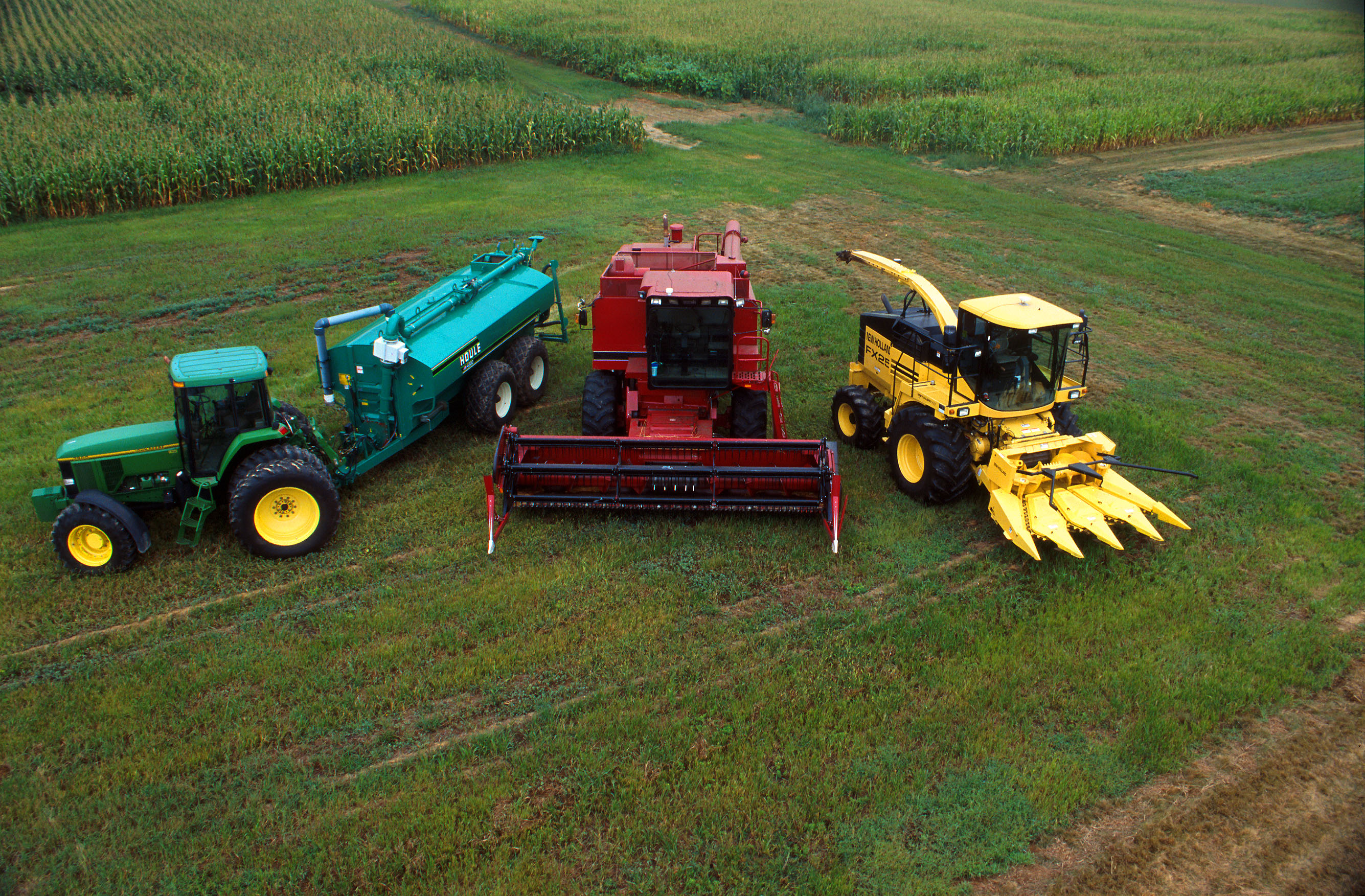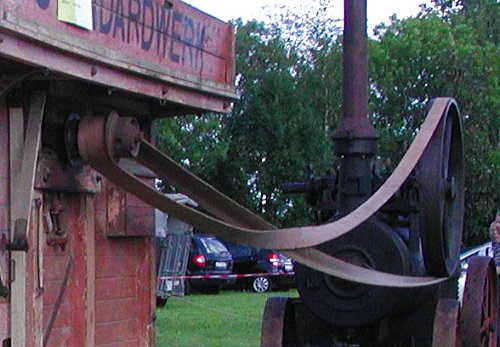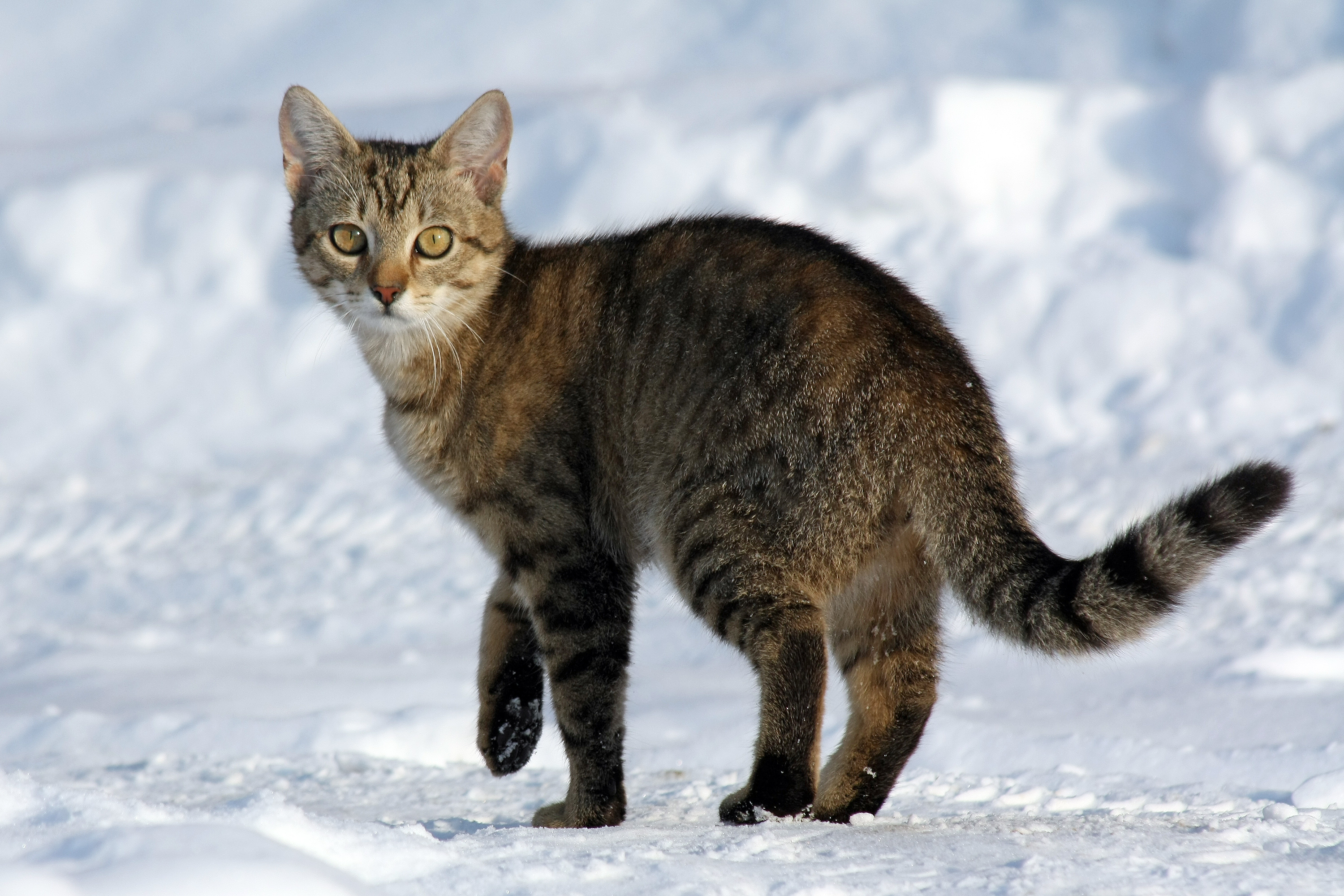|
Agricultural Machinery
Agricultural machinery relates to the machine (mechanical), mechanical structures and devices used in farming or other agriculture. There are list of agricultural machinery, many types of such equipment, from hand tools and power tools to tractors and the farm implements that they tow or operate. Machinery is used in both organic farming, organic and nonorganic farming. Especially since the advent of mechanised agriculture, agricultural machinery is an indispensable part of how the world is fed. Agricultural machinery can be regarded as part of wider agricultural automation technologies, which includes the more advanced digital equipment and agricultural robotics. While robots have the potential to automate the three key steps involved in any agricultural operation (diagnosis, decision-making and performing), conventional motorized machinery is used principally to automate only the performing step where diagnosis and decision-making are conducted by humans based on observations an ... [...More Info...] [...Related Items...] OR: [Wikipedia] [Google] [Baidu] |
Threshing Machine
A threshing machine or a thresher is a piece of agricultural machinery, farm equipment that separates grain seed from the plant stem, stalks and husks. It does so by beating the plant to make the seeds fall out. Before such machines were developed, threshing was done by hand with Flail (tool), flails: such hand threshing was very laborious and time-consuming, taking about one-quarter of agricultural labour by the 18th century. Mechanization of this process removed a substantial amount of drudgery from farm labour. The first threshing machine was invented circa 1786 by the Scottish engineer Andrew Meikle, and the subsequent adoption of such machines was one of the earlier examples of the mechanised agriculture, mechanization of agriculture. During the 19th century, threshers and mechanical reapers and reaper-binders gradually became widespread and made grain production much less laborious. Separate reaper-binders and threshers have largely been replaced by machines that combine all ... [...More Info...] [...Related Items...] OR: [Wikipedia] [Google] [Baidu] |
Belt (mechanical)
A belt is a loop of flexible material used to link two or more rotating shafts mechanically, most often parallel. Belts may be used as a source of motion, to transmit power efficiently or to track relative movement. Belts are looped over pulleys and may have a twist between the pulleys, and the shafts need not be parallel. In a two pulley system, the belt can either drive the pulleys normally in one direction (the same if on parallel shafts), or the belt may be crossed, so that the direction of the driven shaft is reversed (the opposite direction to the driver if on parallel shafts). The belt drive can also be used to change the speed of rotation, either up or down, by using different sized pulleys. As a source of motion, a conveyor belt is one application where the belt is adapted to carry a load continuously between two points. History The mechanical belt drive, using a pulley machine, was first mentioned in the text of the ''Dictionary of Local Expressions'' by the Han ... [...More Info...] [...Related Items...] OR: [Wikipedia] [Google] [Baidu] |
Pulley
Sheave without a rope A pulley is a wheel on an axle or shaft enabling a taut cable or belt passing over the wheel to move and change direction, or transfer power between itself and a shaft. A pulley may have a groove or grooves between flanges around its circumference to locate the cable or belt. The drive element of a pulley system can be a rope, cable, belt, or chain. History The earliest evidence of pulleys dates back to Ancient Egypt in the Twelfth Dynasty (1991–1802 BC) and Mesopotamia in the early 2nd millennium BC. In Roman Egypt, Hero of Alexandria (c. 10–70 AD) identified the pulley as one of six simple machines used to lift weights. Pulleys are assembled to form a block and tackle in order to provide mechanical advantage to apply large forces. Pulleys are also assembled as part of belt and chain drives in order to transmit power from one rotating shaft to another. Plutarch's ''Parallel Lives'' recounts a scene where Archimedes proved the effectiveness ... [...More Info...] [...Related Items...] OR: [Wikipedia] [Google] [Baidu] |
Oxen
An ox (: oxen), also known as a bullock (in BrE, British, AusE, Australian, and IndE, Indian English), is a large bovine, trained and used as a draft animal. Oxen are commonly castration, castrated adult male cattle, because castration inhibits testosterone and aggression, which makes the males docile and safer to work with. Cows (adult females) or bulls (intact males) may also be used in some areas. Oxen are used for ploughing, for transport (pulling carts, hauling wagons and even riding), for threshing grain by trampling, and for powering machines that grind grain or supply irrigation among other purposes. Oxen may be also used to skid logs in forests, particularly in low-impact, select-cut logging. Oxen are usually yoked in pairs. Light work such as carting household items on good roads might require just one pair, while for heavier work, further pairs would be added as necessary. A team used for a heavy load over difficult ground might exceed nine or ten pairs. Oxen ... [...More Info...] [...Related Items...] OR: [Wikipedia] [Google] [Baidu] |
Steam Engine
A steam engine is a heat engine that performs Work (physics), mechanical work using steam as its working fluid. The steam engine uses the force produced by steam pressure to push a piston back and forth inside a Cylinder (locomotive), cylinder. This pushing force can be transformed by a connecting rod and Crank (mechanism), crank into rotational force for work. The term "steam engine" is most commonly applied to reciprocating engines as just described, although some authorities have also referred to the steam turbine and devices such as Hero's aeolipile as "steam engines". The essential feature of steam engines is that they are external combustion engines, where the working fluid is separated from the combustion products. The ideal thermodynamic cycle used to analyze this process is called the Rankine cycle. In general usage, the term ''steam engine'' can refer to either complete steam plants (including Boiler (power generation), boilers etc.), such as railway steam locomot ... [...More Info...] [...Related Items...] OR: [Wikipedia] [Google] [Baidu] |
Steam Locomotive
A steam locomotive is a locomotive that provides the force to move itself and other vehicles by means of the expansion of steam. It is fuelled by burning combustible material (usually coal, Fuel oil, oil or, rarely, Wood fuel, wood) to heat water in the locomotive's Boiler (power generation), boiler to the point where it becomes gaseous and its volume increases 1,700 times. Functionally, it is a steam engine on wheels. In most locomotives, the steam is admitted alternately to each end of its Steam locomotive components, cylinders in which pistons are mechanically connected to the locomotive's main wheels. Fuel and water supplies are usually carried with the locomotive, either on the locomotive itself or in a Tender (rail), tender coupled to it. #Variations, Variations in this general design include electrically powered boilers, turbines in place of pistons, and using steam generated externally. Steam locomotives were first developed in the United Kingdom of Great Britain an ... [...More Info...] [...Related Items...] OR: [Wikipedia] [Google] [Baidu] |
Energy
Energy () is the physical quantity, quantitative physical property, property that is transferred to a physical body, body or to a physical system, recognizable in the performance of Work (thermodynamics), work and in the form of heat and light. Energy is a Conservation law, conserved quantity—the law of conservation of energy states that energy can be Energy transformation, converted in form, but not created or destroyed. The unit of measurement for energy in the International System of Units (SI) is the joule (J). Forms of energy include the kinetic energy of a moving object, the potential energy stored by an object (for instance due to its position in a Classical field theory, field), the elastic energy stored in a solid object, chemical energy associated with chemical reactions, the radiant energy carried by electromagnetic radiation, the internal energy contained within a thermodynamic system, and rest energy associated with an object's rest mass. These are not mutual ... [...More Info...] [...Related Items...] OR: [Wikipedia] [Google] [Baidu] |
Traction Engine
A traction engine is a steam engine, steam-powered tractor used to move heavy loads on roads, plough ground or to provide power at a chosen location. The name derives from the Latin ''tractus'', meaning 'drawn', since the prime function of any traction engine is to draw a load behind it. They are sometimes called road locomotives to distinguish them from railway steam locomotive, locomotives – that is, steam engines that run on rails. Traction engines tend to be large, robust and powerful, but also heavy, slow, and difficult to manoeuvre. Nevertheless, they revolutionized agriculture and road haulage at a time when the only alternative Prime mover (tractor unit), prime mover was the draught horse. They became popular in industrialised countries from around 1850, when the first self-propelled portable steam engines for agricultural use were developed. Production continued well into the early part of the 20th century, when competition from internal combustion engine-powered ... [...More Info...] [...Related Items...] OR: [Wikipedia] [Google] [Baidu] |
Portable Engine
A portable engine is an engine, either a steam engine or an internal combustion engine, that sits in one place while operating (providing power to machinery), but (unlike a stationary engine) is wikt:portable#Adjective, portable and thus can be easily moved from one work site to another. Mounted on wheels or skids, it is either towed to the work site or moves there via self-propulsion. Portable engines were in common use in industrialised countries from the early 19th through early 20th centuries, during an era when power transmission#Mechanical power, mechanical power transmission was widespread. Before that, most power generation and transmission were by working animal, animal, watermill, water, windmill, wind, or manual labour, human; after that, a combination of electrification (including rural electrification) and modern vehicles and equipment (such as tractors, trucks, automobile, cars, engine-generators, and machines with their engines built in) displaced most use of porta ... [...More Info...] [...Related Items...] OR: [Wikipedia] [Google] [Baidu] |
Steam Power
A steam engine is a heat engine that performs mechanical work using steam as its working fluid. The steam engine uses the force produced by steam pressure to push a piston back and forth inside a cylinder. This pushing force can be transformed by a connecting rod and crank into rotational force for work. The term "steam engine" is most commonly applied to reciprocating engines as just described, although some authorities have also referred to the steam turbine and devices such as Hero's aeolipile as "steam engines". The essential feature of steam engines is that they are external combustion engines, where the working fluid is separated from the combustion products. The ideal thermodynamic cycle used to analyze this process is called the Rankine cycle. In general usage, the term ''steam engine'' can refer to either complete steam plants (including boilers etc.), such as railway steam locomotives and portable engines, or may refer to the piston or turbine machinery alone, a ... [...More Info...] [...Related Items...] OR: [Wikipedia] [Google] [Baidu] |
Domesticated Animal
This page gives a list of domesticated animals, also including a list of domestication of animals, animals which are or may be currently undergoing the process of domestication and animals that have an extensive relationship with humans beyond simple predation. This includes species which are semi-domesticated, undomesticated but Captive breeding, captive-bred on a commercial scale, or commonly wild-caught, at least occasionally captive-bred, and Tame animal, tameable. In order to be considered fully domesticated, most species have undergone significant Heredity, genetic, Behavior, behavioural and Morphology (biology), morphological changes from their wild ancestors, while others have changed very little from their wild ancestors despite hundreds or thousands of years of potential selective breeding. A number of factors determine how quickly any changes may occur in a species, but there is not always a desire to improve a species from its wild form. Domestication is a gradual process ... [...More Info...] [...Related Items...] OR: [Wikipedia] [Google] [Baidu] |









